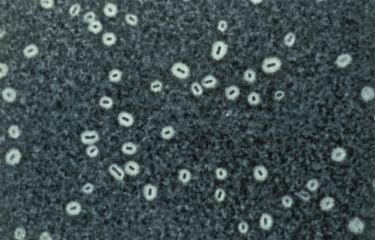Bacteria are not just passive; they are capable of interacting with their close environment. How? One way is by secreting molecules outside their envelope using complex protein machinery. Scientists have recently elucidated the formation mechanisms underpinning one of these secretion systems, thereby paving the way for potential therapeutic applications.
Bacteria are single-celled organisms that are capable of interacting with their external environment, for example by secreting molecules outside their cell envelope. They do this by means of large complexes containing several proteins, known as secretion systems. Since the molecules secreted are key factors for bacterial survival, adaptation and pathogenicity, secretion systems represent prime therapeutic targets.
Although the different components in these protein complexes have now been identified, their structures are still only partly known. Their assembly dynamics and the role they play in molecular secretion have also yet to be elucidated.
Delving into the formation of type II secretion systems
In a recently published study, scientists from the Institut Pasteur's Department of Structural Biology and Chemistry and the CNRS particularly focused on type II secretion systems (T2SSs). A T2SS, composed of 12 to 14 proteins, is a complex machinery embedded in the envelope of some pathogenic bacteria. It plays an essential role in bacterial colonization and virulence by secreting molecules that enable the adhesion of cells or toxins.
The scientists specifically explored the T2SS assembly platform, which is composed of PulL and PulM proteins and is vital for the constitution of the secretion system. "By using a combination of microbiological, biochemical and biophysical approaches, we were able to determine the mode of assembly and atomic structure of the complex formed by specific domains of these two components," explains Nadia Izadi-Pruneyre, Head of the Bacterial Transmembrane Systems Unit.

"We showed how the structural complementarity and plasticity of these structures promotes their association during the secretion process," continues the scientist. The results also suggest that the PulL-PulM complex orchestrates the assembly of the various T2SS components and plays a key role in transporting proteins outside the bacteria.
This study improves our understanding of the molecular dynamics resulting in the formation of T2SSs. It opens up new avenues for research and paves the way for the use of this secretion system for future applications in antimicrobial therapy, synthetic biology and biotechnology.
This study comes under the antimicrobial resistance priority scientific area in the Institut Pasteur's 2019-2023 Strategic Plan.
Source:
Structure and dynamic association of an assembly platform subcomplex of the bacterial type II secretion system, Structure, December 30, 2022
DOI: 10.1016/j.str.2022.12.003
Régine Dazzoni1, Yuanyuan Li2, Aracelys López-Castilla1, Sébastien Brier3, Ariel Mechaly4, Florence Cordier1,3, Ahmed Haouz4, Michael Nilges1, Olivera Francetic2, Benjamin Bardiaux1*, Nadia Izadi-Pruneyre1,5,6*
1 Institut Pasteur, Université Paris Cité, CNRS UMR3528, Structural Bioinformatics Unit, 75015 Paris, France
2 Institut Pasteur, Université Paris Cité, CNRS UMR3528, Biochemistry of Macromolecular Interactions Unit, 75015 Paris, France
3 Institut Pasteur, Université Paris Cité, CNRS UMR3528, Biological NMR and HDX-MS Technological Platform, 75015 Paris, France
4 Institut Pasteur, Université Paris Cité, CNRS UMR3528, Crystallography Platform, 75015 Paris, France
5 Institut Pasteur, Université Paris Cité, CNRS UMR3528, Bacterial Transmembrane Systems Unit, 75015 Paris
6Lead contact
*Correspondence: benjamin.bardiaux@pasteur.fr (B.B.), nadia.izadi@pasteur.fr (N.I.-P.)







